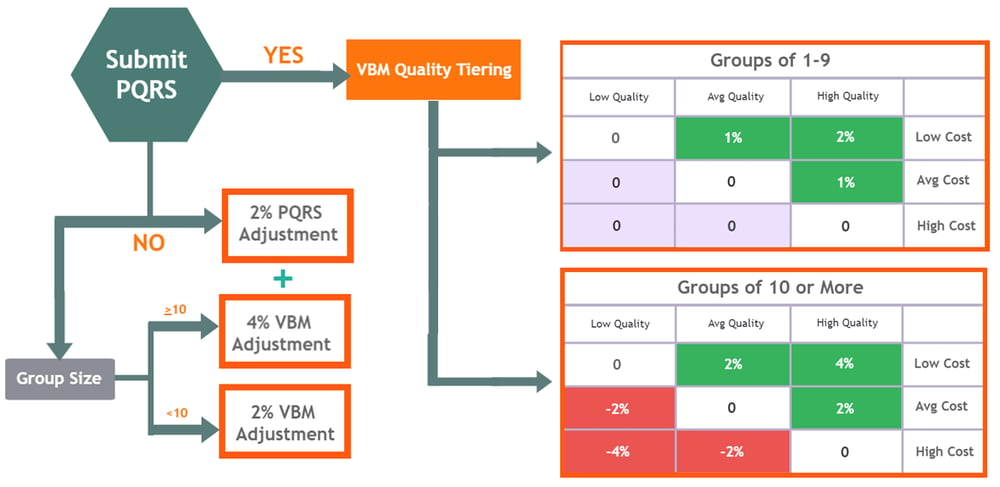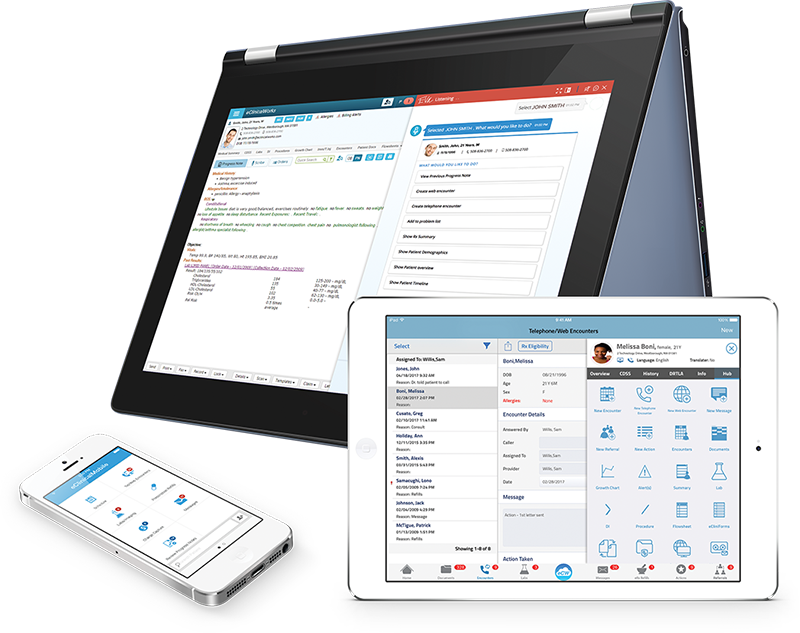The Value-based Modifier (VBM) provides for differential payments to a physician or group of physicians under the Medicare Physician Fee Schedule and is based upon the quality of care furnished compared to cost during a performance period. The Value Modifier program will provide comparative performance information to physicians as part of Medicare’s effort to improve the quality and efficiency of medical care. Here is how the Value Modifier program relates to PQRS and MIPS to further the movement from fee-for-service to value-based reimbursement.
The overall approach of CMS to implement the Value Modifier is based on participation in the Physician Quality Reporting System (PQRS). Thus, if you do not participate in PQRS then you will automatically fail the Value-based Modifier program.
How the Value-Based Modifier Works
Because the Value Modifier (VM) program uses PQRS data, those providers who report PQRS data will not need to report additional data.
The VM, using a combination of CMS calculations and quality measures reported through PQRS, determines a composite score for each practice, reflecting the quality and cost of care compared against national benchmarks. The performance is then determined to be below, average, or above the benchmark, and CMS calculates penalties, no adjustments, or incentives based on this comparison.
[Also: Understanding PQRS: What It Is and What You Need to Know Now]
Why the Value-Based Modifier Matters
The composite performance score that the VBM program contributes to ranges from 0 to 100 and influences reimbursement levels under the Merit Based Incentive Payment System (MIPS).
Each year, a performance threshold (PT) will be established by CMS, at which providers face 0% adjustments to their Medicare Part B payments. Providers who are above the PT will receive an incentive payment that equals a percentage of the Medicare Part B payments for that performance year. The total percentage depends on how far above the PT a provider scores.
The payments increase linearly from 0% up to the maximum payment percentage. Providers not meeting thresholds would face negative penalty adjustments to their Medicare Part B payments for that performance year. Providers participating "significantly" in APMs may be exempt from these measures and earn a 5% bonus rate increase.
For more about how MIPS affects physician reimbursement, check out this blog post here.
Who Does the Value-Based Payment Modifier Program Affect?
In the 2014 performance year (thus the 2016 payment year) only groups of 10 or more were affected by the VBM program. A group size of 100+ was faced with a -4% non-reporting penalty (for PQRS and VM) but if they did report they were given upward, neutral or downward payment adjustments based on the VBM benchmark comparison.
Groups of 10-99 were faced with a -2% non-reporting penalty (PQRS only) but if they did report they were given upward, neutral, or downward payment adjustments based on the VM benchmark comparison.
Increased EPs and Penalties in 2015
In the 2015 performance year (thus the 2017 payment year) CMS broadened the range of Eligible Professionals (EPs) and increased the penalties. Groups of 10 or more were faced with an automatic -6% penalty for non-reporting (PQRS and VM) but if they did report they were faced with upward, neutral, or downward payments ranging from -4% to +4%, based on the VM comparison.
Groups of 1-9 were given an automatic penalty of -4% for non-reporting (PQRS and VM) but if they did report they were only faced with upward or neutral payments ranging from no change to +2%, based on the VM comparison.
[Also: 6 FAQs About the Merit Based Incentive Payment System]
Changes to Eligible Providers in 2016
In the 2016 reporting year CMS has broadened the range even further by making all EPs, even non-physicians subject to the VBM program. The penalties for the 2016 performance year (thus the 2018 payment year) are the same as the previous year.
To get a visual understanding of how the two programs interact and to understand the penalties better see the graphic below.
Value-Based Payment Modifier - 2018 Payment Year (2016 Performance Year)
Questions about PQRS, MIPS, or VBM? Leave a comment below.






-306584-edited.jpg)

